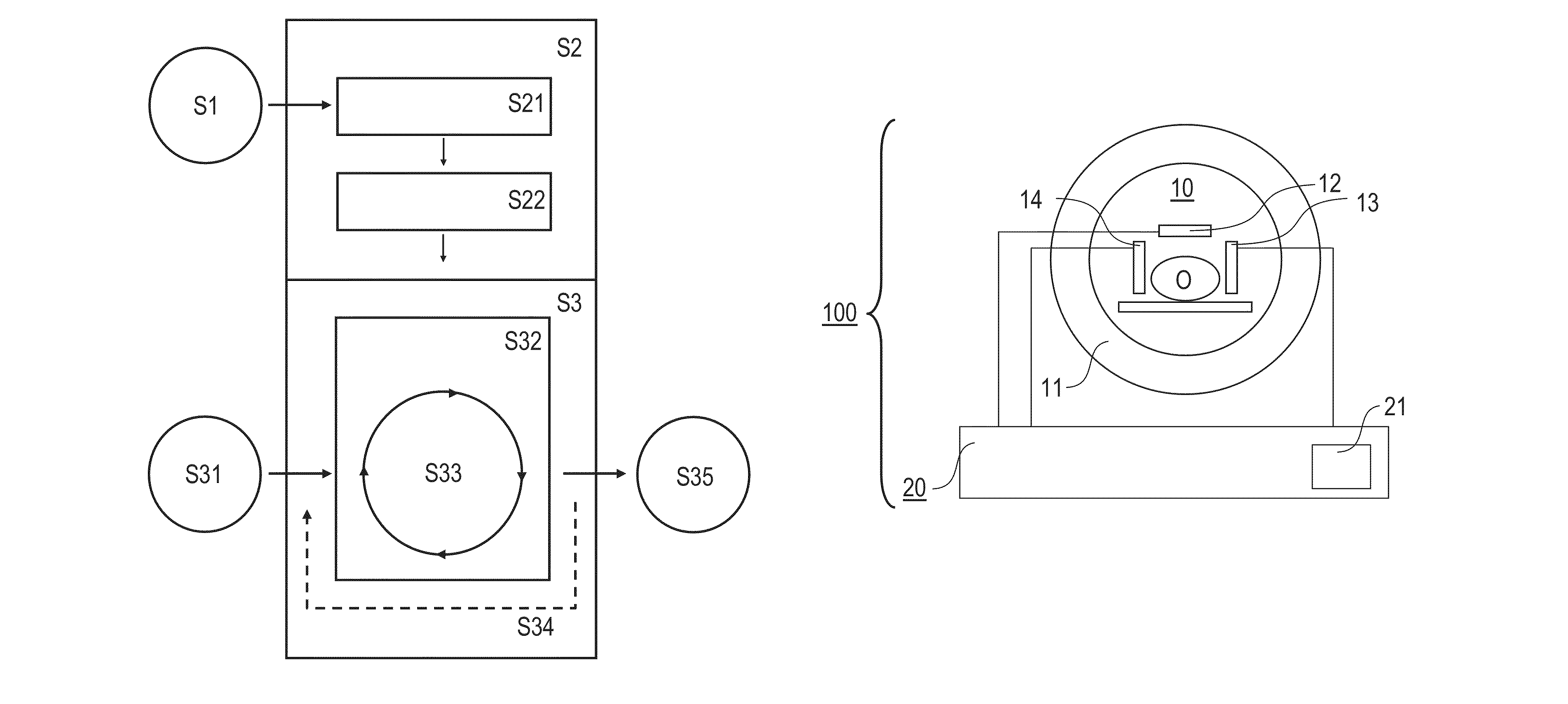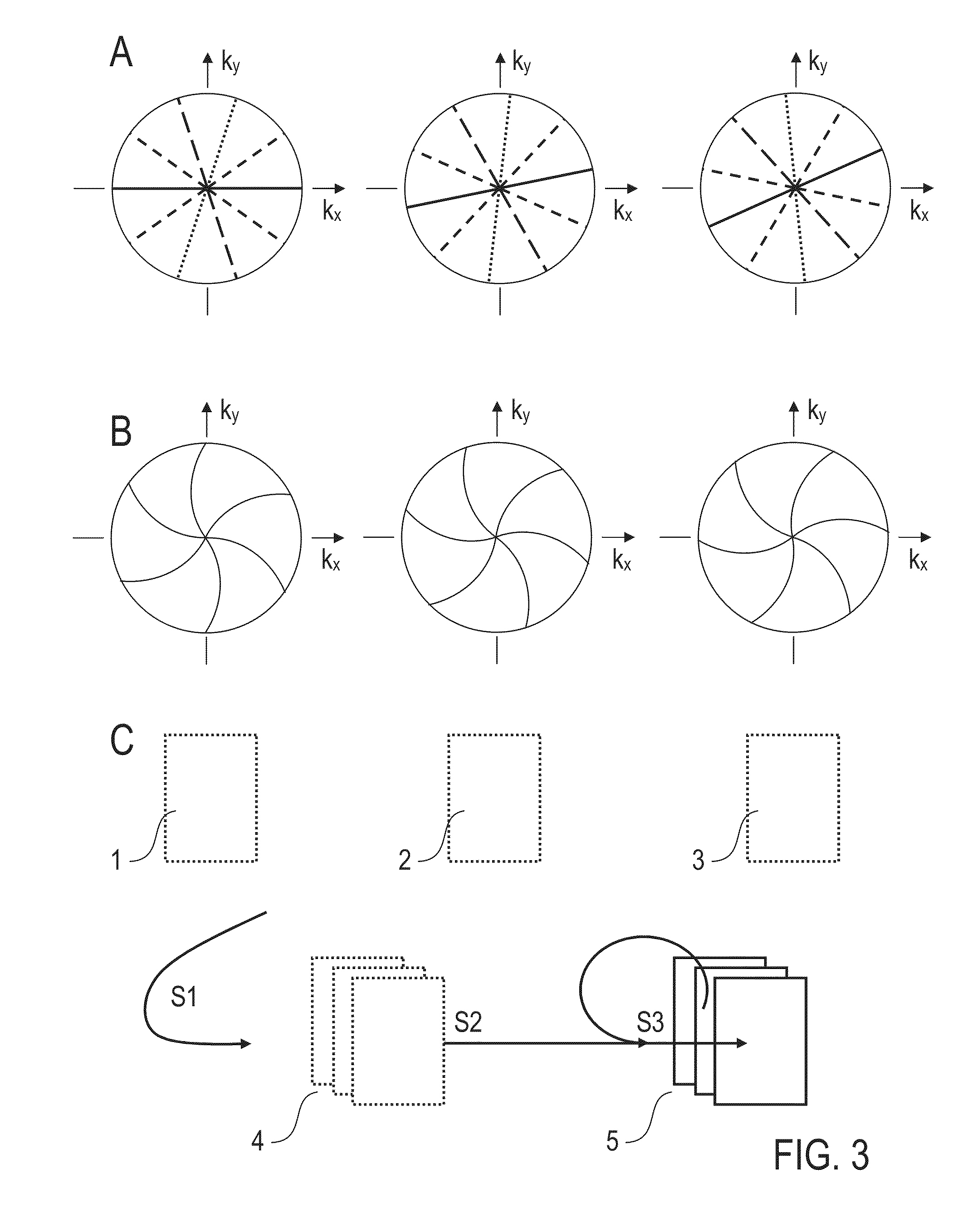Method and device for reconstructing a sequence of magnetic resonance images
a magnetic resonance and sequence technology, applied in the field of reconstructing a sequence of magnetic resonance images, can solve the problems of geometric distortion, affecting the quality so as to reduce the number of lines of each set of image raw data, accelerate data acquisition, and reduce the degree of undersampling
- Summary
- Abstract
- Description
- Claims
- Application Information
AI Technical Summary
Benefits of technology
Problems solved by technology
Method used
Image
Examples
Embodiment Construction
[0041]Preferred embodiments of the invention are described in the following with particular reference to the design of the k-space trajectories, the mathematical formulation of the regularized non-linear inverse reconstruction and examples of images obtained with the inventive technique. Details of an MRI device, the construction of gradient echo sequences and their adaptation to a particular object to be imaged, the numerical implementation of the mathematical formulation using available software tools and optional further image processing steps are not described as far as they are known from conventional MRI techniques. Furthermore, exemplary reference is made in the following to parallel MR imaging wherein the image raw data comprise MRI signals received with a plurality of radio frequency receiver coils. It is emphasized that the application of the invention is not restricted to parallel MR imaging, but rather possible even with the use of one single receiver coil.
[0042]FIG. 1 s...
PUM
 Login to View More
Login to View More Abstract
Description
Claims
Application Information
 Login to View More
Login to View More - R&D
- Intellectual Property
- Life Sciences
- Materials
- Tech Scout
- Unparalleled Data Quality
- Higher Quality Content
- 60% Fewer Hallucinations
Browse by: Latest US Patents, China's latest patents, Technical Efficacy Thesaurus, Application Domain, Technology Topic, Popular Technical Reports.
© 2025 PatSnap. All rights reserved.Legal|Privacy policy|Modern Slavery Act Transparency Statement|Sitemap|About US| Contact US: help@patsnap.com



